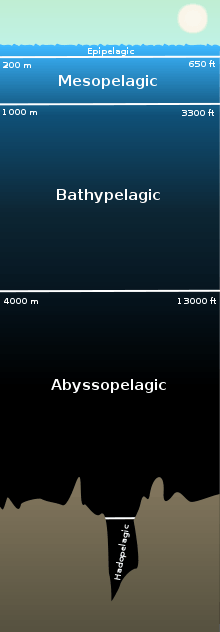Water column

A water column is a conceptual column of water from the surface of a sea, river or lake to the bottom sediments.[1] Water columns are used chiefly for environmental studies evaluating the stratification or mixing (e.g., by wind-induced currents) of the thermal or chemically stratified layers in a lake, stream or ocean. Some of the common parameters analyzed in the water column are pH, turbidity, temperature, salinity, total dissolved solids, various pesticides, pathogens and a wide variety of chemicals and biota.
The concept of water column is quite important, since many aquatic phenomena are explained by the incomplete vertical mixing of chemical, physical or biological parameters. For example, when studying the metabolism of benthic organisms, it is the specific bottom layer concentration of available chemicals in the water column that is meaningful, rather than the average value of those chemicals throughout the water column.
Hydrostatic pressure can be analyzed by the height of a water column, which effectively yields the pressure at a given depth of the column.
The term water column is also commonly used in scuba diving to describe the area in which divers ascend and descend.



